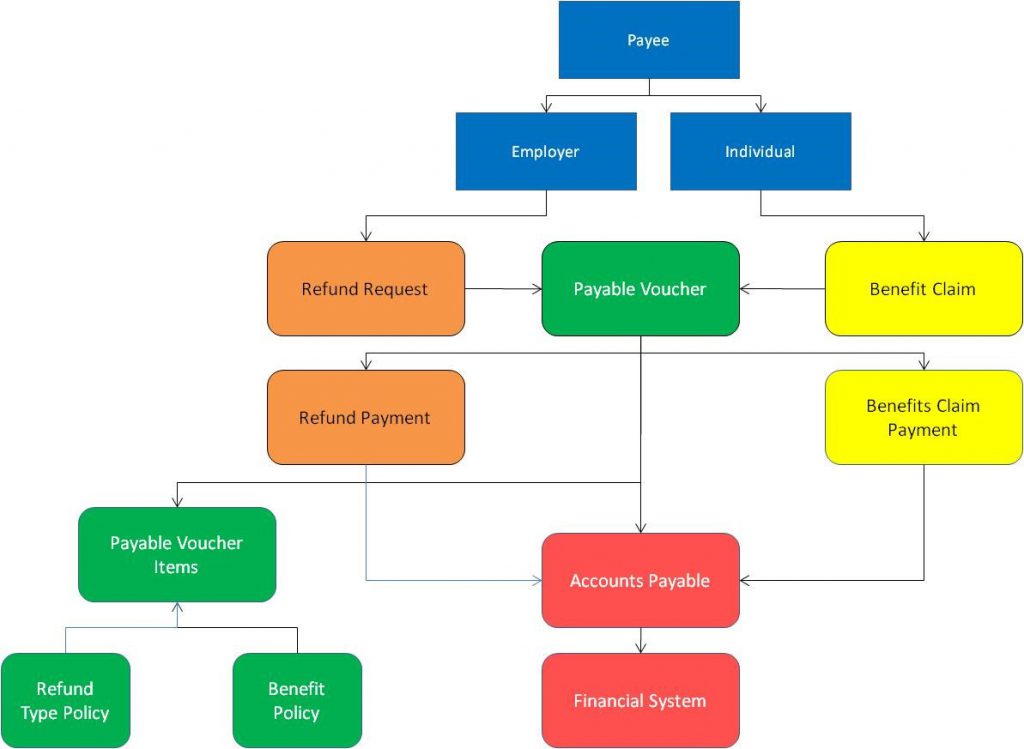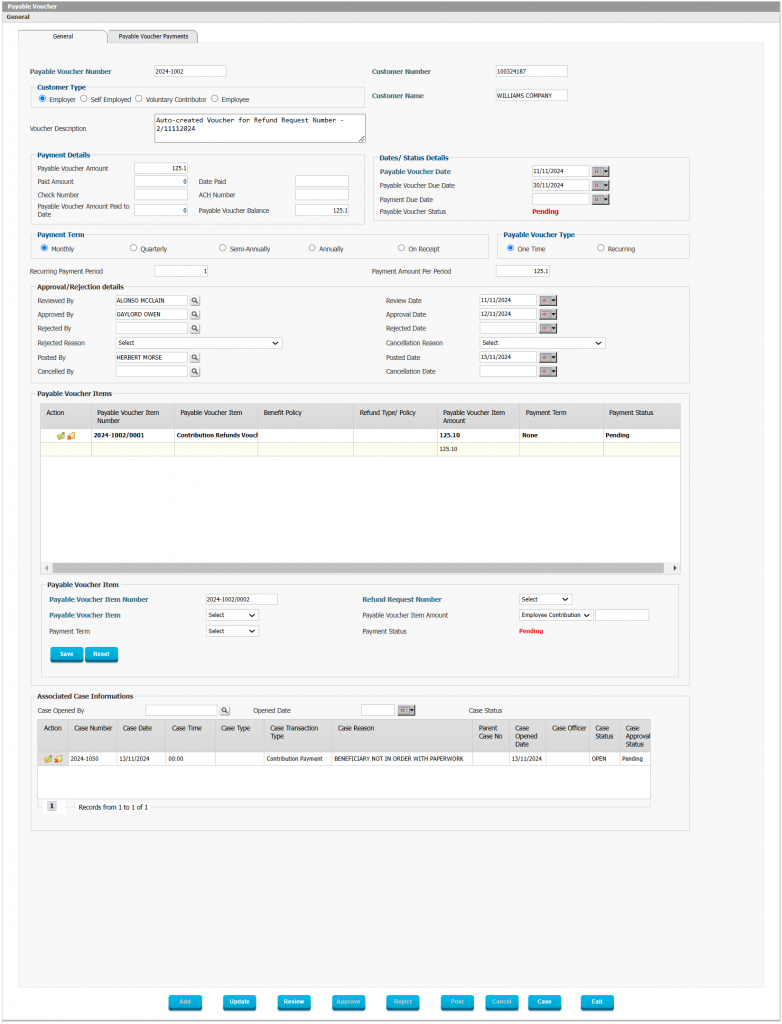Social security organizations handle a vast amount of financial transactions, making them prime targets for fraud, errors, and inefficiencies. Payables management serves as an essential tool for social security administrations worldwide, allowing them to maintain control, mitigate risks, and ensure transparent transactions with both beneficiaries and employers. With the rise of digital solutions, such as Interact SSAS’s Payable Voucher system, social security agencies can introduce an additional layer of security, review, and oversight into their payment processes. This article delves into the importance of payables management, the risks it addresses, and the benefits it brings to social security organizations globally.
The Scale and Scope of Social Security Payments
Globally, social security administrations distribute massive amounts of funds to beneficiaries each year. These payments cover a range of benefits, including pensions, disability assistance, unemployment support, and maternity benefits. In addition, refunds may be issued to employers or self-employed individuals who overpay or claim reimbursements. Given the large sums of money involved, even minor inefficiencies or errors can lead to significant financial impacts, and fraudulent activities could result in severe financial losses.
In the U.S., for example, the Social Security Administration (SSA) in 2024, paid a total of approx $1.5 trillion USD in benefits to almost 68 million Americans in benefits paid. Similar organizations in countries such as Canada, the United Kingdom, and Australia manage equally substantial budgets compared to their country’s GDP. With such high stakes, the need for tight controls, accurate auditing, and robust risk management processes is more crucial than ever. Payables management systems, like the one offered by Interact SSAS, help ensure that these funds are distributed accurately and appropriately.
Key Risks in Social Security Payments
- Fraud and Abuse: Social security systems are vulnerable to various forms of fraud, including identity theft, fraudulent claims, and unauthorized payments. Without stringent verification processes, social security funds can be siphoned off by unscrupulous actors, leading to substantial financial losses and reputational damage.
- Errors and Oversights: Human error remains a persistent risk in any financial transaction process. In social security payments, data entry errors, duplication of payments, or misallocation of funds can disrupt services for beneficiaries and incur unnecessary expenses for social security administrations.
- Compliance and Accountability: Social security organizations must adhere to government regulations and maintain transparent, accountable records of their financial activities. Without an organized system, achieving compliance can be challenging, leading to potential legal repercussions.
How Payables Management Mitigates Risks
Payables management provides a structured approach to processing, reviewing, and approving payments within social security administrations. With systems like Interact’s Payable Voucher process, social security agencies can implement additional controls, ensuring every transaction undergoes rigorous scrutiny before final disbursement.
Enhanced Internal Control with Payable Vouchers
The Payable Voucher system, as defined in Interact’s framework, introduces a formalized structure for issuing payments. Before a payment is made, a Payable Voucher is created, documenting the transaction details and requiring approval. This voucher acts as a standardized form that details the payment obligation owed to either beneficiaries or employers, depending on whether it’s a benefit claim or refund request.
A Payable Voucher becomes a safeguard, allowing administrators to review and verify the legitimacy of each payment. It also provides a transparent record that supports compliance and accountability. The benefits of using a Payable Voucher system in payables management include:
- Reduction of Fraud: By requiring an approved voucher before payment, organizations can prevent unauthorized disbursements and reduce the risk of fraudulent transactions.
- Error Minimization: Structured, multi-level approval processes help catch potential errors early, minimizing financial mismanagement.
- Clear Audit Trail: Each voucher is documented in the system, creating a comprehensive log that can be easily reviewed during audits.
The Role of Workflow Automation in Payables Management
Automation is a critical component in modern payables management. By linking the Payable Voucher system to workflows for benefit claims and refund requests, social security administrations can automate the creation of vouchers once a claim is approved. This minimizes manual intervention, reduces processing times, and lowers the likelihood of human error.
However, automation must be balanced with stringent controls. Fully automated processes can sometimes overlook nuanced cases, leading to unintentional errors or undetected fraud. Interact’s Payable Voucher framework addresses this by implementing a tiered review and approval workflow, involving managers, supervisors, and auditors, as necessary. This layered approach provides a safety net, allowing the organization to benefit from faster processing without sacrificing oversight.
Benefits of Tight Controls in Payables Management
- Increased Efficiency and Speed: Automation and streamlined workflows significantly reduce the time needed to process each payment. This is especially crucial in social security, where timely disbursements impact beneficiaries’ livelihoods. With an efficient payables management system, payments can be processed quickly, while still ensuring all necessary checks are performed.
- Improved Fraud Detection: Payables management systems include anomaly detection capabilities, flagging suspicious patterns for further investigation. For instance, unusual payment amounts or repeated transactions for a single beneficiary can be identified and reviewed before funds are released.
- Enhanced Transparency and Accountability: By requiring detailed records for each transaction, payables management systems ensure that all payments can be tracked, audited, and validated. In Interact’s system, each Payable Voucher is recorded in the Voucher Register, where its status, amount, and associated documents can be viewed. This transparency is vital for maintaining public trust in social security systems.
- Compliance with Regulatory Standards: In many countries, social security administrations are required to adhere to strict financial reporting standards. A robust payables management system simplifies compliance by providing organized, accessible records for regulatory audits and reviews.
- Prevention of Duplicate Payments: With Payable Vouchers, duplicate payments can be effectively prevented. Each voucher is checked against existing records to ensure the same claim or refund isn’t paid multiple times. This prevents accidental overpayment and conserves public funds.
Interact’s Payables Management Framework: Key Features
The Payables Management Specifications in Interact provide a detailed structure for managing payments to beneficiaries and employers. Some of the essential features include:
- Payable Voucher Types: Interact’s system accommodates both Benefit Payable Vouchers (for beneficiary payments) and Refund Payable Vouchers (for employer refunds). This distinction helps streamline the process for different types of payees.
- Review and Approval Workflow: Interact’s Payables Management offers a review workflow that includes managerial oversight, providing an added layer of verification.
- Self-Service Options: Beneficiaries and employers can access their Payable Vouchers through a self-service portal, enhancing transparency and allowing payees to monitor the status of their payments.
- Automated GL Posting: Once a Payable Voucher is approved, Interact’s system automatically posts the necessary transactions to the general ledger, simplifying financial management for social security administrations.
- Cancellation and Rejection Processes: In cases where a payment needs to be stopped, Interact’s system allows for Payable Voucher cancellations and rejections, ensuring that any payment errors are addressed before funds are disbursed.
Balancing Automation with Control: Finding the Optimal Speed
The goal of payables management is to find a balance between rapid processing and effective control. Too much control can slow down the payment process, causing delays for beneficiaries. Conversely, overly automated processes may miss fraudulent activities or errors. Interact’s Payables Management system is designed to strike this balance by automating routine tasks while incorporating checkpoints for high-risk transactions.
The system’s workflow includes roles for review and approval, allowing social security organizations to assess transactions based on their risk level. High-value or unusual payments can be flagged for additional scrutiny, while smaller, routine transactions are processed swiftly. This dual approach enables social security administrations to maintain both speed and security, ensuring beneficiaries receive timely support while protecting funds from fraud and misuse.
Conclusion
Payables management is a powerful tool for enhancing control, reducing fraud, and improving oversight within social security administrations. With the introduction of automated systems like Interact’s Payables Management framework, organizations can streamline payment processes while maintaining stringent controls. By implementing Payable Vouchers, automated workflows, and robust review mechanisms, social security systems worldwide can protect public funds, ensure compliance, and deliver timely benefits to millions of individuals and employers.
As social security organizations face increasing demands and scrutiny, effective payables management will continue to play a crucial role in maintaining trust, transparency, and financial stability. The Interact framework exemplifies how digital solutions can revolutionize payables management, paving the way for more secure, efficient, and accountable social security systems.



